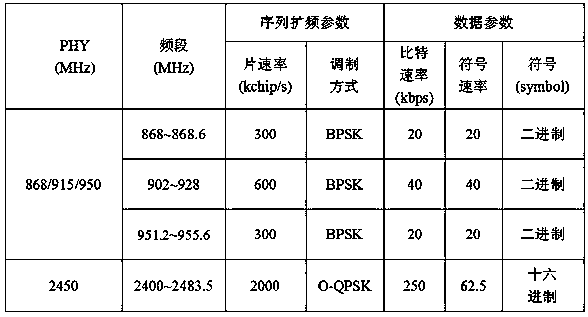Partitioning method for observation space in BPSK demodulating space and application
A technology of observation space and observation domain, which is applied in the division of observation space in the process of BPSK demodulation, can solve the problems of reducing the service life of 802.15. The calculation process is simple and the effect of reducing the estimation error
- Summary
- Abstract
- Description
- Claims
- Application Information
AI Technical Summary
Problems solved by technology
Method used
Image
Examples
Embodiment 1
[0100] Embodiment one, such as Figure 9 As shown, when k is 8, the observation space R is evenly divided into eight observation domains R with equal central angles n , R 0 ~R 7 Mark with ①~⑧ respectively, you can see R 0 The bisector of the angle coincides with the positive semi-axis of the real axis, then R 0 ~R 7 The angles of the angle bisectors of these eight observation domains are 0°, 45°, 90°, 135°, 180°, 225°, 270° and 315° respectively, then R 0 ~R 7 The observations are and at this time The specific calculation method is:
[0101]
Embodiment 2
[0102] Embodiment 2, when k is 6, the observation space R is divided into six observation domains R n Time The specific calculation method is:
[0103]
Embodiment 3
[0104] Embodiment 3, when k is 10, the observation space R is divided into ten observation domains R n Time The specific calculation method is:
[0105]
PUM
 Login to View More
Login to View More Abstract
Description
Claims
Application Information
 Login to View More
Login to View More - R&D Engineer
- R&D Manager
- IP Professional
- Industry Leading Data Capabilities
- Powerful AI technology
- Patent DNA Extraction
Browse by: Latest US Patents, China's latest patents, Technical Efficacy Thesaurus, Application Domain, Technology Topic, Popular Technical Reports.
© 2024 PatSnap. All rights reserved.Legal|Privacy policy|Modern Slavery Act Transparency Statement|Sitemap|About US| Contact US: help@patsnap.com










